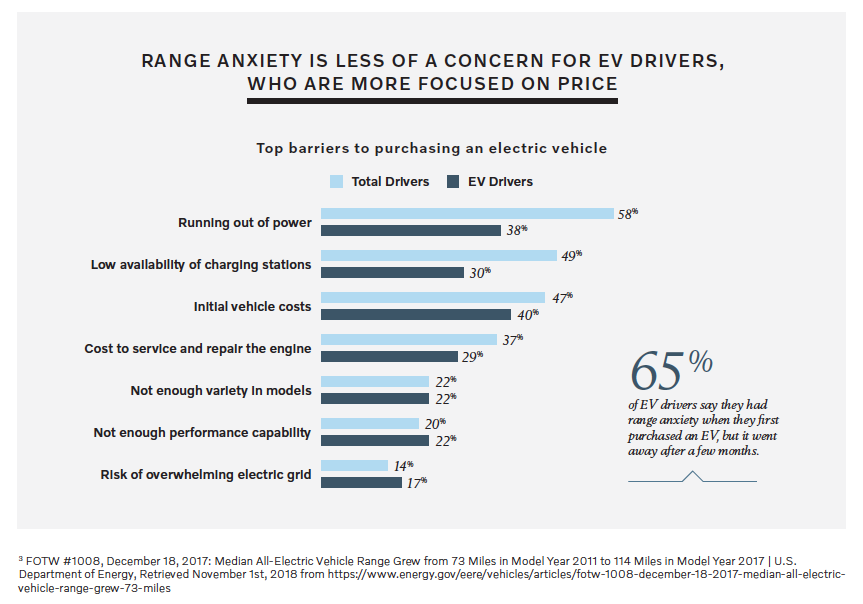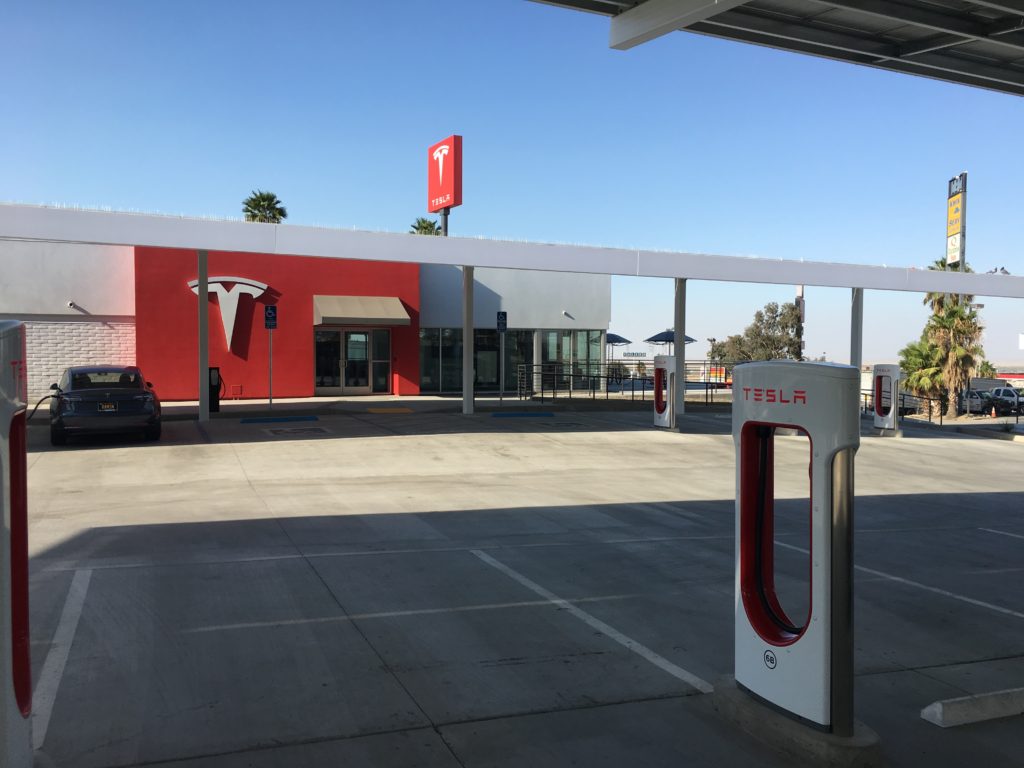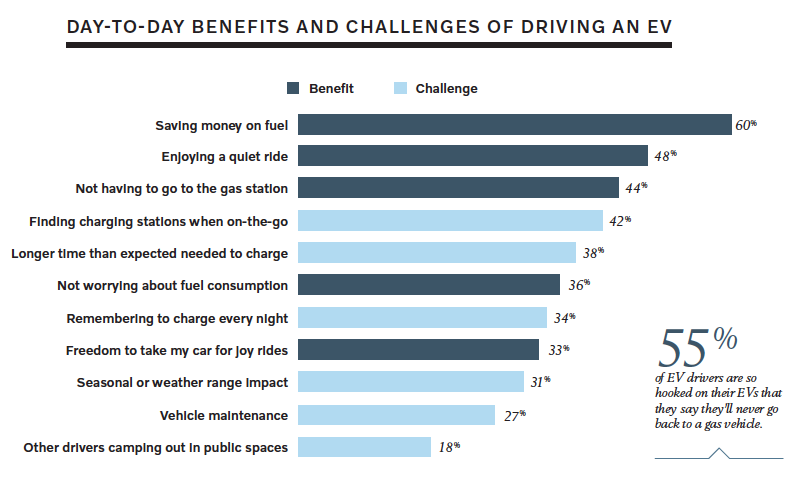Range, cost competitiveness and availability of charging stations remain the top barriers to EV adoption, according to recently released survey results from Volvo Car USA/The Harris Poll. As the average range of US available BEVs heads toward 250 miles, automakers will need to focus significant resources on EV charging infrastructure.
To better understand the transition to electric vehicles Volvo set out to explore overall drivers’ perceptions of EVs, as well as the mindset of EV drivers, from how they perceive these vehicles, to the driving experience, to day-to-day benefits and challenges.
Top Barriers to Purchasing an Electric Vehicle
The top barrier among all drivers was running out of power (58%), followed by low availability of charging stations (49%) and then initial vehicle costs (48%). For existing EV owners the top barrier was initial vehicle costs (40%), followed by running out of power (38%) and then low availability of charging stations (30%).

The fact that current EV owners have less of a concern about running out of power is no surprise as any EV owner will attest this initial fear usually dissipates after a few months. It is telling, however, that 40% of EV owners cite cost as a purchase barrier. That 30% of EV owners (versus 49% of all respondents) see low availability of charging stations also shows that “charger anxiety” declines sfter ownership, but also that it remains a significant barrier to mass adoption.
It would have been interesting to sort the responses by the vehicle range of existing owners to see how it impacted their top concerns. For example, Tesla owners with 250+ miles of range and access to the Supercharger and Destination charger network presumably would have put initial cost as the top barrier and running out of power and low availability of charging stations as much lower barriers.
This would have provided greater insight into the connection between specific battery range levels and fear of running out of power, known as range anxiety.
Factors That Would Increase Likelihood to Purchase an EV
Among non EV owners, more charging stations (61%) is the top factor that would get them to purchase an EV, followed by EVs being the same price as a traditional vehicle (57%), then government financial incentives (41%) and the ability to try an EV for 30 days before buying (40%). The high interest in government incentives is in essence a proxy for EVs to cost the same or close to that of gas-powered cars.

Whereas the ability to try out an EV for 30 days before buying it sounds like an idea that Volvo will consider in the future and was throwing up a trial balloon question. Similarly, 32% respondents agreeing that “Manufacturer providing a gasoline or hybrid car to switch out” would increase likelihood to purchase synchs with Volvo’s subscription service that offers multiple vehicles under a single subscription.
That said, both response options speak to the importance of buyers becoming comfortable with what is in essence a new technology to car drivers.
Most Desired Additions to Public Charging Stations
For existing EV owners, the most wanted addition to charging stations is faster charging with a willingness to pay more. 48% chose the response “Quick charge option to pay more to charge in half the time.” This confirms a belief of mine that high-speed charging will soon cost significantly more than Level 2 and likely at similar rates to that of filling up a car with gasoline.

The second most desired addition was access to food, beverages and WiFi. While today many charging stations are located near coffee shops and quick service restaurants, I expect to see more charging centers similar to airline clubs (see Airport Retail (Not Gas Stations) Will Be the Model for Future Mega-Recharging Centers Along Highways) in the future. The closest to this model in the US is the Tesla Supercharger center located Kettleman City.

Interestingly about a quarter (26%) would like to see vehicle maintenance services, an idea I have put forth several times. It makes perfect sense to have your tires rotated, wiper blades replaced, car detailed, windshield washer fluid topped up, etc. while your EV charges.
However, nearly two-thirds of EV drivers say public charging stations aren’t reliable (61%) and more one-third say the experience of using public charging stations is time consuming (36%). (No chart on these responses were included in Volvo/Harris report.) Clearly EV charging station networks have to do a better job of maintaining their charging equipment and improve uptime reliability. But with Tesla and Electrify America rolling out charging stations that can add about 200 miles of range in 15-20 minutes, complaints about time to charge will dissipate.
Overall Benefits of Driving an Electric Vehicle
When asked about overall benefits of driving an EV, all drivers and EV drivers alike agreed that cost savings from better fuel economy was the top choice (59%, 58% respectively). 39% of EV drivers cited “responsive driving” as a benefit to driving an EV, more than double (19%) that of all drivers.
Interestingly, EV owners simply seem to like driving an EV more than a gas car because of how it performs more so than because it is better for the environment. This makes sense, as a large factor in buying an EV is often people wanting to reduce their carbon footprint, but once they own an EV they also enjoy the torque and smoothness of an EV.

Day-To-Day Benefits and Challenges of Driving an Electric Vehicle
Saving money on fuel (60%) was the number one benefit according to EV owners, followed by “enjoying the quiet ride” (48%) and then “not having to go to the gas station” at 44%.
Finding charging stations when on-the-go (42%) and “longer time than expected needed to charge” (38%) were the top challenges. The first challenge again speaks to the importance of charging infrastructure to EV adoption and the second that many or most consumers will have an expectation that charging doesn’t take much longer than putting fuel in the tank of a gas/diesel-powered vehicle.

While this Volvo/Harris Poll survey didn’t uncover anything very surprising and I found some of the responses worded a bit oddly, it did confirm that charging infrastructure remains the largest hurdle to EV adoption.
In the US the average and median range of available BEVs is well north of 200 miles and will reach close to 250 in the next 18 months or so. While price is the other key factor, it is clear that range anxiety will soon be much less of a concern for new EV buyers and automakers will need to focus on investing in building out EV charging infrastructure.
The survey was conducted online within the United States by The Harris Poll on behalf of Volvo from October 11-17, 2018, among 1,510 U.S. drivers ages 18 and older, including 250 who currently drive or have driven EVs in the last year. This online survey is not based on a probability sample and therefore no estimate of theoretical sampling error can be calculated.


2 Responses
I believed that having an EV makes also a better driver than a fuel cars! Less accident not only because few people are owning EV. Do you have data about EV road accidents?
I haven’t seen data comparing accidents in EVs versus ICE. But any data would not be very meaningful as EVs are about.7% of the cars on the road, are new and hence safer, less likely to fail in some way, and many have more advanced automated driving systems that generally make them safer.